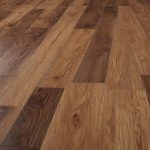Are you curious about how to glue rocks together for your next DIY project? Whether you’re creating a garden path, an artistic sculpture, or a decorative piece, knowing the right techniques can make a big difference. Yes, you can glue rocks together effectively.
Choose the Right Adhesive:
- Construction Adhesive: Ideal for smaller rocks. It’s strong and flexible.
- Mortar: Best for larger rocks, offering a durable bond.
Prepare the Rocks:
- Clean the Surface: Remove dirt and debris to ensure a strong bond.
- Roughen Smooth Surfaces: Use sandpaper to scuff smooth rocks for better adhesion.
Applying Adhesive:
- Construction Adhesive: Use a caulking gun to apply a thick bead in a serpentine pattern on one rock. Press the second rock firmly into place.
- Super Glue: For smaller projects, rinse rocks, apply a small dab of super glue, press together for 30 seconds, and tape to hold while curing.
Support While Curing:
- Use wire, rope, or tape to hold rocks in position while the adhesive dries. This step is crucial to ensure the rocks stay aligned and bond properly.
Curing Time:
- Keep the rocks supported for one to several hours until the adhesive is fully cured. Patience here ensures a strong and lasting bond.
Key Takeaways:
- Selecting the appropriate adhesive based on rock size is crucial.
- Proper surface preparation enhances the adhesive bond.
- Supporting the rocks during the curing process is essential for stability.
By following these steps, you can confidently glue rocks together and create sturdy, beautiful projects. Dive in and let your creativity flow.
Table of Contents
Steps
| Step | Description | Details |
| Choose the Right Adhesive | Pick the appropriate adhesive based on rock size and project requirements. | For small stones, use clear-drying glue. Medium-sized rocks work best with epoxy, while large rocks require construction adhesive or mortar. Consider factors such as bond strength, flexibility, and environmental resistance. For an in-depth guide, visit Adhesive on Wikipedia. |
| Plan and Test-fit | Arrange the stones in the desired configuration before gluing. | Lay out the stones to ensure a smooth bonding process. Test-fit them to see how they will align and fit together. |
| Prepare the Surfaces | Ensure the rock surfaces are clean and roughened if necessary. | Wash the rocks to remove any dirt or debris. Use sandpaper to scuff smooth surfaces to enhance adhesion. Cleanliness is crucial for a strong bond. |
| Apply the Adhesive | Evenly spread the adhesive on the rocks. | For construction adhesive, use a caulking gun to apply a thick bead in a serpentine pattern. Press the rocks firmly together. For smaller rocks and super glue, apply a small dab on each surface and press together for 30 seconds. |
| Support the Rocks | Keep the rocks in position while the adhesive cures. | Use clamps, weights, wire, rope, or tape to hold the rocks in place. Ensure they remain stationary for several hours or as per the adhesive instructions to achieve full curing. |
| Handle with Care | Avoid disturbing the rocks during the curing process. | Follow the adhesive manufacturer’s instructions carefully, maintaining the necessary support and avoiding movement until the glue has fully set. |

Conclusion
Mastering the art of gluing rocks together can transform your DIY projects from ordinary to extraordinary. Whether you’re building a garden path, crafting an artistic sculpture, or creating a unique decorative piece, the right techniques ensure durability and beauty.
Choosing the Right Adhesive is pivotal. For smaller rocks, construction adhesive offers a strong, flexible bond. Larger rocks benefit from mortar, providing a robust and weather-resistant connection. Preparing your rocks properly is equally crucial: clean surfaces ensure optimal adhesion, while roughening smooth surfaces with sandpaper enhances grip.
When applying adhesive, use a caulking gun for construction adhesive, spreading a thick, serpentine bead. Press the rocks firmly together and support them with wire, rope, or tape to maintain alignment while curing. Patience is key here; allowing the adhesive to fully cure, typically taking several hours, guarantees a stable bond.
From the intricate work of super glue on smaller projects to the heavy-duty application of mortar for larger stones, each method requires careful attention to detail. By following these steps, you not only ensure a strong bond but also open up a world of creative possibilities, turning your vision into reality with confidence and precision.






